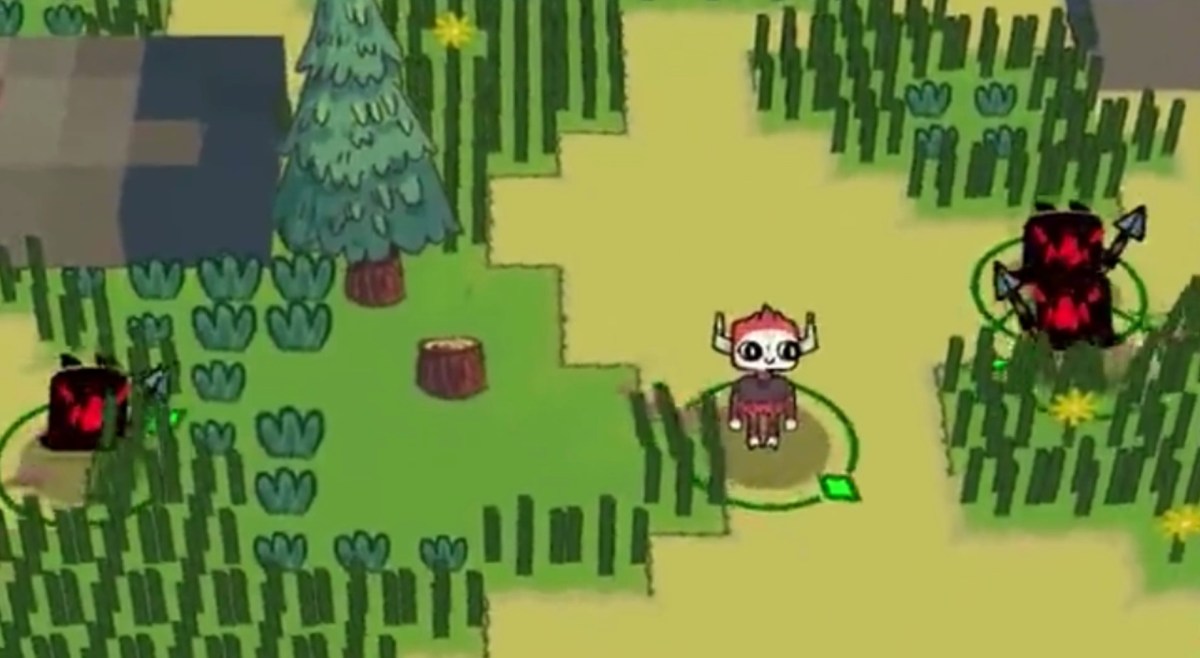Massive Monster’s Creative Director Julian Wilton wasn’t a good student, in his own words. He was too busy pursuing his personal interests. That included a love for gaming, a drive for hustling, and eventually, a side hobby scamming in RuneScape. If you loved Cult of the Lamb, it’s pertinent to know that it would never have been possible without a few dastardly RuneScape scams.
At PAX Aus 2024, Wilton was a major keynote speaker, and during his talk, he discussed his wild origin story, and how exactly it led to the formation of Massive Monster, and the global phenomenon that is Cult of the Lamb.
For those who grew up in the early 2000s, there’s a touch of the familiar in his tale.
Wilton’s villainous turn in RuneScape didn’t begin with nefarious intent. When he first began playing, he was young and excitable, and all he wanted to do was have a membership to access higher quality items and better quests. Being young, he didn’t have the cash to get a membership – but Wilton was crafty. He began selling soft drinks and other items to kids on the playground to get cash, and used this to pay for his membership.
Once he had the membership, he realised he could hustle within RuneScape itself, scamming players into giving him cash with a “99% mostly legit” dice roll gambling game.
Eventually, he was banned for his actions – he’d run away when players actually won the game of chance, leaving them penniless – but while it lasted, the experience was transformative for him. He realised he could play around with game worlds, and create his own opportunities.
Further experimentation led Wilton to playing around in the back end of game files, and realising they could be picked apart and changed by modifying files. The next logical step, as Wilton described, was using this knowledge to create his own games. That led him all the way to Adobe Flash Player, which served as a starting platform for his journey into game development.
Read: PAX Aus 2024’s furry Cult of the Lamb wedding was joyous
He worked on a range of games using Flash, including Angry Bees, which was published by FlashGameLicense under a decent game deal. Following the success of this game, he teamed up with developer Jay Armstrong to work on Super Adventure Pals (aka The Adventure Pals), and later, James Pearmain also joined the team, forming the basis of Massive Monster.
The studio started with work for hire games, as well as smaller, experimental titles. As Wilton explained, many of these games flopped. Even those with a relatively high profile proved to be financial failures. The lesson for Massive Monster was in learning to embrace this, staying strong, and reaching for new ideas, regardless of fear and a loss of motivation.
Cult of the Lamb changed everything for the team – and it was only released out of sheer doggedness, and an unwillingness to accept defeat.
The Massive Monster team didn’t find the idea for Cult of the Lamb overnight, as Wilton explained. It started simply, with a basic combat prototype, and the concept of a god who’s kicked out of a pantheon due to a lack of popularity. In this original version of the game, the spurned god would’ve had to regather his flock, and build up temples for his worship while on Earth.

This idea was soon scrapped, but replaced with another prototype vision: of a game tasking you with running hell. That idea was also turfed, as the Massive Monster team didn’t want to lean too heavily into darker ideas, like torture.
Eventually, they struck gold with a simpler, refined concept: what if you ran a cult?
This new path proved to be much more inspiring, with ideas springing up in a way that felt far more organic, and exciting. Massive Monster developed a refreshed prototype, and put together a reel with flashy combat, cutesy characters, and plenty of charm. As shown off at PAX Aus 2024, this version of Cult of the Lamb still changed significantly in development, but there’s enough familiar to recognise the bones of the released game.
This vision was enough to charm Devolver Digital, as after one Massive Monster developer managed to contact someone at the publisher (using the ye olde name-organisation email trick), they were able to work towards a viable publishing deal. That still meant pressure and stress, and feeling like they weren’t good enough to deliver – but in trusting the process and pushing through it, Massive Monster was able to see light at the end of the tunnel.
“Great ideas don’t arrive fully cooked,” Wilton explained at PAX Aus 2024. But as he discussed, real gold can be uncovered once you brush away the dirt.
The rest of Cult of the Lamb’s story has been covered widely by the press. After stressful months in development, it launched to widespread acclaim. (Early bugs and glitches weren’t enough to dampen its popularity.) As of January 2024, it had sold over 3.5 million copies. It’s one of Australia’s biggest game development success stories. In fact, the game has become so popular it even had its own spin-off themed weddings at PAX Aus 2024.
Cult of the Lamb is a testament to pushing through the muck, and trusting in your own ideas. For Massive Monster, this approach has allowed them to plan a much brighter future – one filled with new game releases, new paid updates, and other “secret” fun projects. In the Lamb, Massive Monster trusted – and so, they have reaped the rewards.





